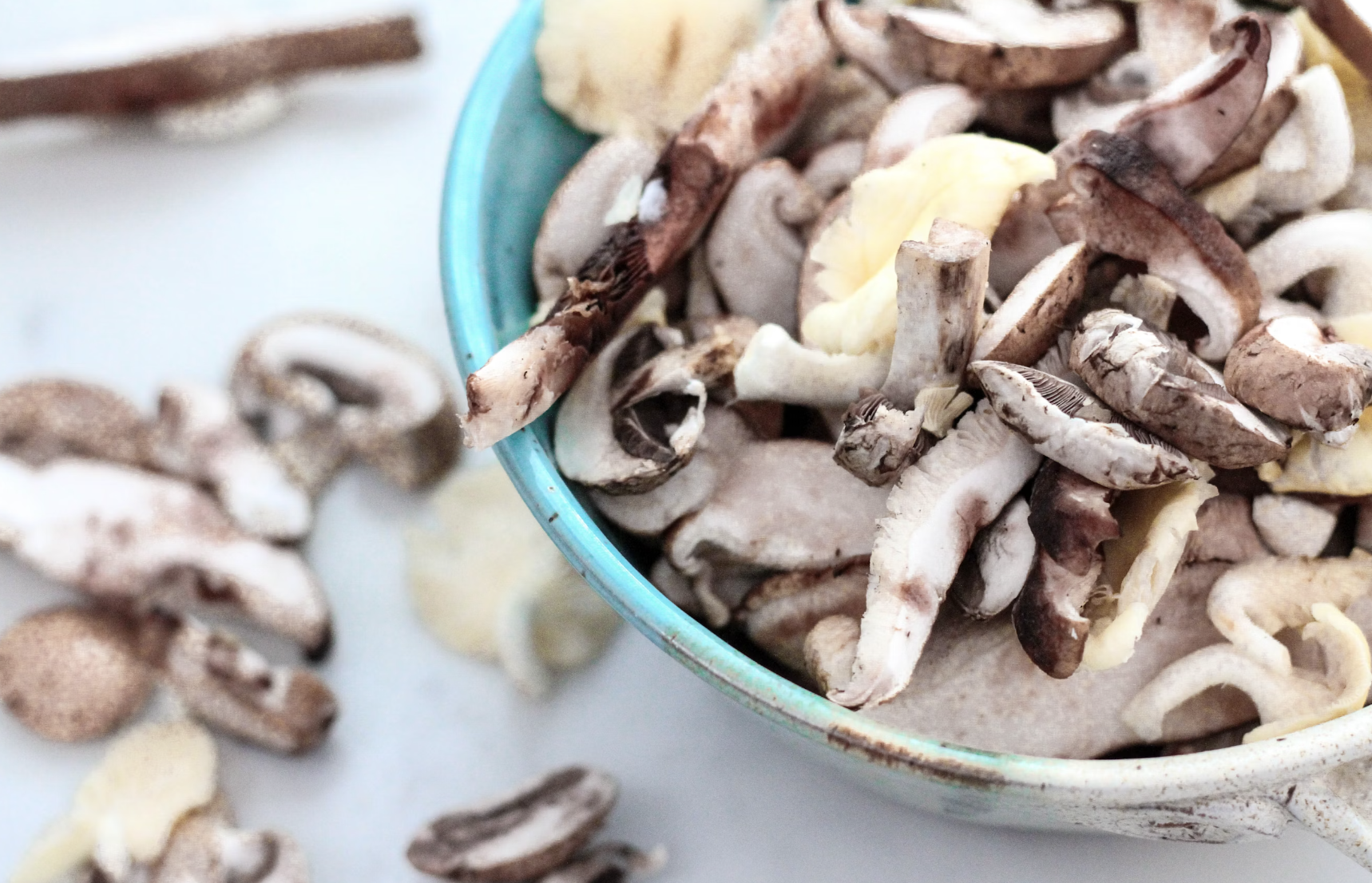A guide to BLood glucose and vitamin D
Do you love the sun? How about mushrooms?! People with diabetes may want to enhance their love for these two givers of vitamin D. Read on for more!
What is the Relationship Between Vitamin D and Blood Glucose?
Insulin Sensitivity and Secretion:
Insulin Sensitivity: Vitamin D helps improve insulin sensitivity. Insulin sensitivity refers to how responsive the body’s cells are to insulin. Higher insulin sensitivity means cells use blood glucose more effectively, reducing blood sugar levels.
Insulin Secretion: Vitamin D also influences insulin secretion from the pancreas. Sufficient levels of vitamin D are necessary for the pancreas to produce and release insulin efficiently.
Inflammation and Immune Function:
Vitamin D has anti-inflammatory properties. Chronic inflammation is linked to insulin resistance and type 2 diabetes. By reducing inflammation, vitamin D may help improve insulin sensitivity.
It also plays a role in stimulating the immune system. Autoimmune responses against beta cells in the pancreas are a characteristic of type 1 diabetes. Adequate vitamin D levels might help reduce the risk of an attack on beta cells and potentially slow the progression of T1D.
Calcium Regulation:
Vitamin D aids in the absorption of calcium, which is crucial for insulin-mediated intracellular processes in insulin-responsive tissues. Proper calcium balance is essential for the normal function of insulin receptors.
Gene Expression:
Vitamin D influences the expression of genes involved in glucose metabolism. This includes genes that regulate insulin action and glucose transport.
Association with Diabetes Risk:
Several studies have shown that low levels of vitamin D are associated with a higher risk of developing type 2 diabetes. People with adequate vitamin D levels tend to have a lower risk of insulin resistance and diabetes.
Supplementing with vitamin D3 has been shown to improve glucose tolerance and insulin resistance.
What is the Difference Between Vitamin D2 and D3?
Check out this information to ensure adequate vitamin D levels in the body. Vitamin D3 is often the preferred source for supplementation. Meanwhile, D2 is absorbed well but may not stick around as long.
Source:
Vitamin D2: Derived from plant sources and fungi. It is often found in fortified foods and dietary supplements.
Vitamin D3: Produced by the skin when exposed to sunlight (specifically UVB radiation) and found in animal-based foods such as fatty fish, liver, and egg yolks. It is also available in dietary supplements.
Chemical Structure:
Vitamin D2: Has a slightly different side chain compared to D3, which affects its stability and metabolism.
Vitamin D3: Chemically different in its side chain, making it more stable and potentially more effective in raising and maintaining vitamin D levels in the blood.
Efficacy:
Absorption and Utilization: Both forms are well-absorbed in the intestine, but vitamin D3 is generally more effective at raising and maintaining overall vitamin D levels in the blood.
Half-Life: Vitamin D3 has a longer half-life than D2, meaning it stays in the body longer and maintains its levels more effectively.
Potency:
Vitamin D3: Is considered more potent than D2. Studies have shown that vitamin D3 is more effective at increasing serum 25-hydroxyvitamin D levels, which is the primary marker for vitamin D status in the body.
Vitamin D2: Less potent and may require higher doses to achieve the same effect as D3.
Stability:
Vitamin D2: Less stable when exposed to various conditions such as light and temperature, leading to a faster degradation compared to D3.
Vitamin D3: More stable and less prone to degradation, making it a more reliable form for supplementation.
Both vitamin D2 and D3 are used to treat and prevent vitamin D deficiency, but D3 is generally more effective due to its higher potency, longer half-life, and greater stability.
How Do we Absorb Vitamin D Through our Skin?
WARNING: lots of science ahead.
Sun Exposure: When the skin is exposed to UVB rays from sunlight, a type of cholesterol in the skin (7-dehydrocholesterol) absorbs the UVB radiation.
Conversion to Previtamin D3: The energy from the UVB rays converts 7-dehydrocholesterol into previtamin D3.
Conversion to Vitamin D3: Previtamin D3 undergoes a heat-dependent process to become vitamin D3 (cholecalciferol). This form of vitamin D is still inactive.
Liver Conversion: Vitamin D3 is transported to the liver, where it is converted into 25-hydroxyvitamin D, also known as calcidiol. This is the form that is measured in the blood to assess vitamin D status.
Kidney Conversion: Calcidiol is then transported to the kidneys, where it is converted into the biologically active form of vitamin D, known as 1,25-dihydroxyvitamin D or calcitriol.
Biological Functions: Calcitriol is the active form of vitamin D that helps regulate calcium and phosphate levels in the blood, promoting healthy bone formation and various other physiological functions.
What You Need to Know about Mushrooms and Vitamin D2
Mushrooms have the ability to synthesize vitamin D when exposed to ultraviolet (UV) light! The process involves the conversion of ergosterol, a compound found in mushrooms, into vitamin D2.
Here’s how:
Source of Vitamin D2: When consumed, the vitamin D2 in mushrooms can be absorbed by the body. Though vitamin D2 is slightly less potent than vitamin D3, it still contributes to overall vitamin D levels.
Increased Bioavailability: Cooking mushrooms can increase the bioavailability of vitamin D2, making it easier for the body to absorb. However, overcooking can degrade some of the vitamin.
Synergistic Nutrients: Mushrooms also contain other nutrients, such as phosphorus and B vitamins, which may help in the overall metabolism and utilization of vitamin D in the body. We’re big fans of B vitamins around here!
Supplemental Effect: For people with limited sun exposure or food sources of vitamin D (which is most people), consuming mushrooms that have been exposed to UV light, can help meet their vitamin D needs.
While mushrooms themselves don't enhance the absorption of vitamin D from other sources, they contribute to overall vitamin D intake, which is great news for shroom eaters!
*Chanterelle’s Basking in the Sunlight*
To maximize vitamin D intake, slice up your mushrooms and set them in direct sun light for 15-20 minutes before adding them to your meal.
What does Vitamin D Deficiency Feel Like?
If you suspect you might be vitamin D deficient, it's important to consult your doctor who can order a blood test to measure your levels. Check out these signs & symptoms .
Fatigue and Tiredness: A lack of vitamin D can make you feel constantly tired, even if you are getting enough sleep.
Bone and Back Pain: Vitamin D helps maintain bone health. Deficiency can lead to bone pain and lower back pain.
Depression: Some studies have linked vitamin D deficiency to depression, especially in older adults.
Impaired Wound Healing: Vitamin D plays a role in the body's ability to heal wounds. A deficiency can result in slower healing of cuts, bruises, and other injuries.
Bone Loss: Deficiency can lead to a decrease in bone density, which can increase the risk of fractures.
Hair Loss: Severe hair loss has been linked to low levels of vitamin D, although more research is needed to confirm this.
Muscle Pain: Vitamin D deficiency can cause muscle pain and weakness.
Frequent Infections: Vitamin D is important for immune function, and low levels can result in increased susceptibility to infections.
In Conclusion: Vitamin D is mega important.
Vitamin D is integral to maintaining healthy blood glucose levels by enhancing insulin sensitivity, supporting insulin secretion, reducing inflammation, regulating calcium balance, and influencing gene expression related to glucose metabolism. WOW - that’s saying a lot!
Adequate levels of vitamin D are associated with a lower risk of insulin resistance and type 2 diabetes, making it an important nutrient in the management and prevention of diabetes.


